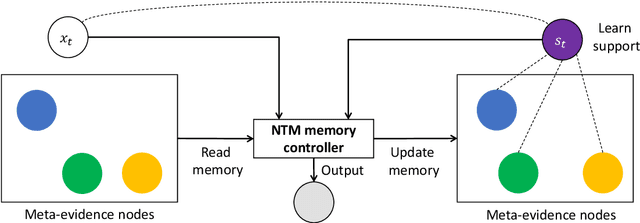Explain by Evidence: An Explainable Memory-based Neural Network for Question Answering
Paper and Code
Nov 05, 2020


Interpretability and explainability of deep neural networks are challenging due to their scale, complexity, and the agreeable notions on which the explaining process rests. Previous work, in particular, has focused on representing internal components of neural networks through human-friendly visuals and concepts. On the other hand, in real life, when making a decision, human tends to rely on similar situations and/or associations in the past. Hence arguably, a promising approach to make the model transparent is to design it in a way such that the model explicitly connects the current sample with the seen ones, and bases its decision on these samples. Grounded on that principle, we propose in this paper an explainable, evidence-based memory network architecture, which learns to summarize the dataset and extract supporting evidences to make its decision. Our model achieves state-of-the-art performance on two popular question answering datasets (i.e. TrecQA and WikiQA). Via further analysis, we show that this model can reliably trace the errors it has made in the validation step to the training instances that might have caused these errors. We believe that this error-tracing capability provides significant benefit in improving dataset quality in many applications.
 Add to Chrome
Add to Chrome Add to Firefox
Add to Firefox Add to Edge
Add to Edge